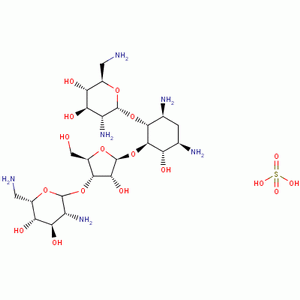Home > Offer to Sell > Pharmaceuticals and Biochemicals > Antibiotic and antimicrobial agents > Chloramphenicol
Chloramphenicol
Inquiry
| Post Date: | Mar 15,2013 |
| Expiry Date: | Sep 11,2013 |
| Detailed Description: |
Cas No. :1405-10-3
Chloramphenicol
Product Name: Chloramphenicol Synonyms: chloramphenicol; 2,2-dichloro-n-[2-hydroxy-1-(hydroxymethyl)-2-(4-nitrophenyl)ethyl]acetamide; d-(-)-threo-2,2-dichloro-n-[beta-hydroxy-alpha-(hydroxy-methyl)-p-nitrophenethyl]acetamide; chloromycetin CAS No: 56-75-7 Content: 99% Packing: 25kg/barrel Molecular Formula: C11H12Cl2N2O5 Molecular Weight: 323.13 EINECS: 200-287-4 Quality Standards: Appearance: Needle-shaped white or yellow-green Therapeutic uses The original indication of chloramphenicol was in the treatment of typhoid, but the now almost universal presence of multiple drug-resistant Salmonella typhi has meant it is seldom used for this indication except when the organism is known to be sensitive. Chloramphenicol may be used as a second-line agent in the treatment of tetracycline-resistant cholera. Because of its excellent BBB penetration (far superior to any of the cephalosporins), chloramphenicol remains the first choice treatment for staphylococcal brain abscesses. It is also useful in the treatment of brain abscesses due to mixed organisms or when the causative organism is not known. Chloramphenicol is active against the three main bacterial causes of meningitis: Neisseria meningitidis, Streptococcus pneumoniae and Haemophilus influenzae. In the West, chloramphenicol remains the drug of choice in the treatment of meningitis in patients with severe penicillin or cephalosporin allergy and GPs are recommended to carry intravenous chloramphenicol in their bag. In low income countries, the WHO recommend that oily chloramphenicol be used first-line to treat meningitis. Chloramphenicol has been used in the U.S. in the initial empirical treatment of children with fever and a petechial rash, when the differential diagnosis includes both Neisseria meningitidis septicaemia as well as Rocky Mountain spotted fever, pending the results of diagnostic investigations. Chloramphenicol is also effective against Enterococcus faecium, which has led to its being considered for treatment of vancomycin-resistant enterococcus. |
| CAS Registry Number: | 1405-10-3 |
| Synonyms: | ;mycifradin sulfate;o-2,6-diamino-2,6-dideoxy-.beta.-l-idopyranosyl-(1.->3)-o-.beta.-d-ribofuranosyl-(1->5))-o-(2,6-diamino-2,6-dideoxy-.alpha.-d-glucopyranosyl-(1->4))-2-deoxy sulfate;Neomycin Sulfate;(1R,2R,3S,4R,6S)-4,6-diamino-2-{[3-O-(2,6-diamino-2,6-dideoxy-beta-L-idopyranosyl)-beta-D-ribofuranosyl]oxy}-3-hydroxycyclohexyl 2,6-diamino-2,6-dideoxy-alpha-D-glucopyranoside sulfate (1:1);(2S,3S,4S,5S,6S)-5-amino-2-(aminomethyl)-6-[(1S,2S,3S,4R,6R)-4,6-diamino-2-[(2R,3S,4R,5S)-4-[(2S,3S,4S,5S,6R)-3-amino-6-(aminomethyl)-4,5-dihydroxy-tetrahydropyran-2-yl]oxy-3-hydroxy-5-(hydroxymethyl)tetrahydrofuran-2-yl]oxy-3-hydroxy-cyclohexoxy]tetrahydropyran-3,4-diol,sulfuric acid;Nystatin sulfate;FRADIOMYCIN SULFATE; |
| Molecular Formula: | C23H48N6O17S |
| Molecular Weight: | 712.7222 |
| Molecular Structure: | 
|
| Company: | Hubei Yuancheng pharmaceutical Co.,Ltd [ China ] |
| Contact: | Harry |
| Tel: | 86-27-88082236 |
| Fax: | |
| Email: | ycgsales03@ycphar.com |
-
Disclaimer statement:The information and data included above have been realized by the enterprises and compiled by the staff, and are subject to change without notice to you. The Chemnet makes no warranties or representations whatsoever regarding the facticity, accuracy and validity of such information and data. In order to ensure your interest, we suggest you chose the products posted by our gold suppliers or VIP members.


